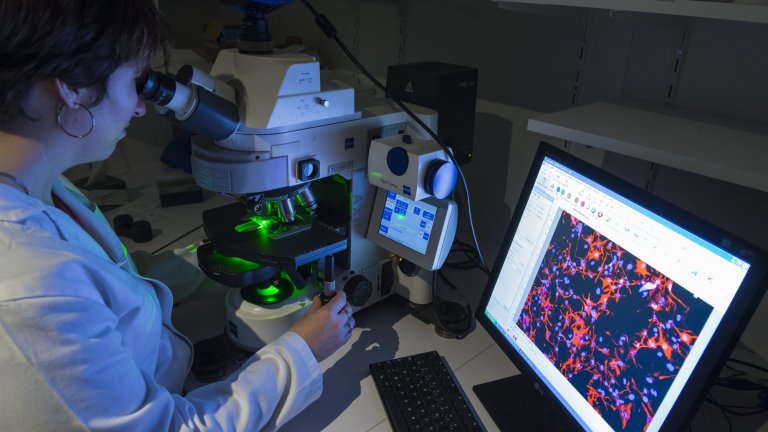
© Cyril Frésillon / CNRS Photothèque
View the mediaFolder
The progress in imaging techniques is inseparable from the advances in knowledge in cell biology, improving our understanding of the cell and intercellular interactions.

© Cyril Frésillon / CNRS Photothèque
View the mediaAdvances in imaging technologies and biophysics have facilitated considerable breakthroughs in observing cells, their components and behaviour. They have helped us to improve our knowledge of different cell types, their functions, but also how they divide and communicate through contact or remotely.
Optical microscopes, which use a light beam, have paved the way for electron microscopes, which use an electron beam, and for confocal microscopy, which uses a laser. Their resolution shows the external and internal structure of organelles with precision. When combined with the use of biological markers, these types of microscopes are excellent tools for identifying extracellular transport and intracellular signalling pathways.
More recently, super-resolution microscopy and the high-throughput screening of 3D biological objects are breaking down new resolution barriers. In addition to observation, it is now possible to manipulate cells individually using remote-controlled microrobots with optical tweezers.
Our increasingly detailed knowledge of the cellular machinery is even leading scientists to design artificial cells, or to reprogramme cells to perform completely different tasks to their natural functions, which opens the door to many applications.
Discover in pictures an overview of the cell biology research undertaken in the CNRS laboratories.
Key words: biophysics, cell, cellular engineering, confocal, imaging, microfluidics, optical tweezers, SEM (scanning electron microscope), TEM (transmission electron microscope)
Our work is guided by the way scientists question the world around them and we translate their research into images to help people to understand the world better and to awaken their curiosity and wonderment.